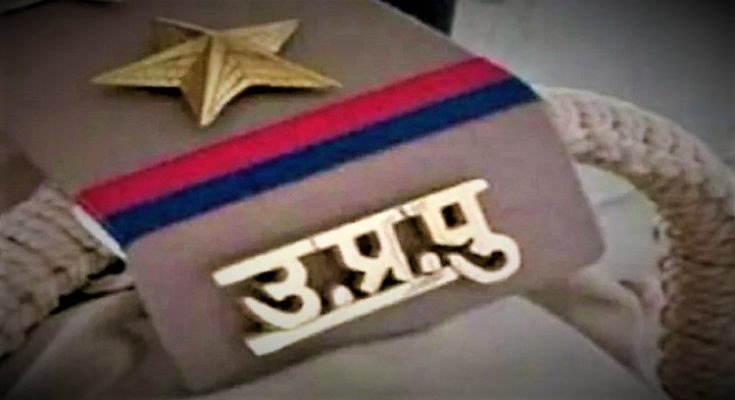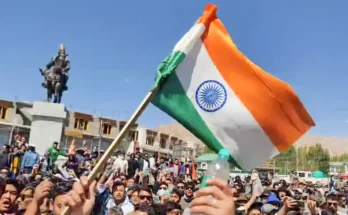Extrajudicial killings are not a recent phenomena in India. While deaths in police firing were earlier seen in “disturbed” areas or conflict zones, they have recently become regular policing practise in many parts of the country. One such state is Uttar Pradesh (UP), which has been an active theatre of “encounter” killings since March 2017. Media estimates suggest that there have been around 8,472 instances of police firing in UP. As a result of this, 146 men have been killed and another 3,302 have been injured with bullets.
This development has received scrutiny from five United Nations Special Rapporteurs. Multiple petitions seeking a fair investigation into these killings are pending at the Supreme Court, and the National Human Rights Commission (NHRC).
On 09.05.18, the NHRC passed an order directing its Investigation Division to conduct fact-finding enquiries into 17 cases of “encounter” deaths in UP. These were to be conducted within four weeks. In May 2018, when the NHRC began its inquiries, the death toll in these police firing stood at 50. Three years later, around 100 more people have been killed by the police in a similar manner. Meanwhile, the NHRC inquiries have either been closed without a proper investigation or remain pending even three years later.
This Report examines the death of 18 young men in these 17 instances of alleged extrajudicial killings by UP police, which were investigated by the NHRC. Spread across 6 districts in western UP, these killings took place between March 2017 and March 2018. The report evaluates the investigations and inquiries conducted in these 17 cases and examines the role of the investigating agency, Executive Magistrates, Judicial Magistrates and the NHRC, to assess whether they complied with the existing legal framework.
The directions issued by the Supreme Court in People’s Union for Civil Liberties (PUCL) v. State of Maharashtra in 2014, (which have the binding force of law) along with the NHRC guidelines, Indian Penal Code, Code of Criminal Procedure, and Indian Evidence Act provide a legal framework for investigation and trial in cases of extrajudicial killings.
The report reveals gross violations of law, both procedural and substantive, by the investigating agency and the judicial magistrates, in investigating these killings. Independent bodies such as the NHRC and oversight mechanisms such as magisterial inquiries have failed to identify these violations of law and have ignored factual contradictions in the police version of events. Instead, they have routinely condoned the unconstitutional procedures followed by the police during these investigations.
The key findings of the Report are as follows –
- Of the 17 cases analysed, in not one case has an FIR been registered against the police team that was involved in the killing. Instead, in all 17 cases, FIRs have been registered against the deceased victims on charges of attempted murder under section 307 IPC and other offences.
- The FIRs registered against the deceased victims in each of the 17 cases claim an identical sequence of events leading to the killing – details of a spontaneous shoot-out between police officers and alleged criminals in which the police are fired upon, and then (in self-defence) fire back, leading to the death of one of the alleged criminals, while his accomplice always manages to escape – raising doubts about the veracity of these claims.
- In violation of the guidelines of the NHRC and the Supreme Court in PUCL, in a majority of cases, the initial investigation was conducted by a police officer from the same police station as the police team involved in the killing, often of the same rank as the senior most person in the “encounter” team. In all these cases, the investigation was later transferred to another Police Station, almost as if to show compliance with PUCL guidelines.
- In all the cases studied in the report, the investigations conducted by the ‘independent’ investigating team of a different police station were inadequate. These investigations accept the police version that they killed the victims in “self-defence”, even though the justification of self-defence for murder has to be proved and determined through a judicial trial. The Police’s defence cannot be presumed from the police version or confirmed through an investigation. No investigation was conducted on whether the use of force was necessary and proportionate. Factual inconsistencies and contradictions were also overlooked. These include –
Post-Mortem Reports show lethal force used – The bodies of 12 of the victims show multiple gunshot wounds on the torso, abdomen and even on the head; some dead bodies also show fractures. Post-Mortem Reports of five deceased victims show blackening and tattooing around the bullet entry wounds, indicating firing from close range. This contradicts the police claim that minimal force was used or that the bullets were aimed at the lower part of the victims’ bodies to immobilize them and ensure their arrest.
Police only sustained minor injuries – Out of the approximate 280 police personnel involved in these 17 police killings, only around 20 police officers sustained injuries. In 15 out of the 17 cases analysed, the police sustained only minor injuries.
Inadequate proof that the deceased or his accomplice were holding weapons or fired at the Police – In seven cases, the fingerprints of the deceased were not found on the weapons recovered from the scene of crime. Therefore, the police’s claim that the victims used weapons to shoot at them is contradicted by independent record.
No evidence to suggest that retaliatory firing by police was necessary – There is an effort to present bullet proof jackets with bullets in them as proof that retaliatory firing was required. At least 16 bullet proof jackets contain bullet entries. However, there is nothing to connect these bullets to the weapons that are claimed to have been recovered from the deceased. It has not even been conclusively shown that these bullet proof jackets were actually used in the purported “encounter”. In some cases, there is nothing to connect the bullet injuries sustained by the police to the weapons purportedly handled by the deceased. - In 16 out of the 17 cases analysed, the investigating officer closed the investigation by filing Closure Reports in court before the Judicial Magistrates. Overlooking the factual contradictions that emerge from the evidence, the closure report in all the 16 cases confirms the police version that the firing was in self-defence. All the cases were closed on the ground that the victims – who were named as an “accused” – were dead, and that the police could not find any information about the accomplice who escaped the crime scene. This process has been held to be unconstitutional by the High Courts and the NHRC in other instances.
- In 11 out of 16 cases where a Closure Report was filed by the police, there appears to be an abdication of judicial powers by the Magistrate who has unquestioningly accepted the Closure of the investigation. By naming the deceased as “accused” in these cases, the requirement of the Court to issue notice to the victim family before closing the case was done away with. Instead, Magistrates issued notice to the police officer, the complainant in the FIR, who in turn gives a “no objection” letter to close the investigation. Through this process, the Judicial Magistrates accept the closure of the investigation.
- The law (Section 176(1-A) of the CrPC) requires an inquiry into the cause of death to be conducted by a Judicial Magistrate, however in at least eight cases, the inquiries were conducted by an Executive Magistrate in violation of CrPC provisions. This violation also indicates that a lack of clarity in the PUCL guidelines is being taken advantage of to evade accountability. The Executive Magistrates held the police killings to be “genuine”, acting well beyond their powers and jurisdiction which is only to determine the cause of death and not determine whether an offence has been committed. The Executive Magistrates’ findings and report are based on the police version, and most reports do not even consider forensic or ballistic evidence. The statements of family members have either not been recorded or recorded in a perfunctory manner.
- Three years after the NHRC directed an investigation into 17 cases detailed in this report, 14 cases have been decided, two cases are still pending and the status of one case is not available in the public domain. Out of the 14 cases decided by the NHRC, 12 cases were closed, finding no foul play on the part of the police, and one case was transferred to the UP State Human Rights Commission. In only one case, the NHRC held that the deceased was killed in a ‘fake encounter’ by the police. The other inquiries by the NHRC overlook the factual contradictions and inconsistencies in the police narrative. It also turns a blind eye to violations of procedural and substantive law, for instance, the registration of all FIRs against the deceased victims and no FIRs against the police; closing the investigation on the grounds of the police version of self-defence, no judicial determination of the justification of self-defence, violations in in the collection and securing of evidence from the scene of crime, often done by police officers belonging to the same Police Station as the police involved in the killings.
- The burden of ensuring investigation and accountability falls entirely on the victims’ families. The families face intimidation, threats, and persecution through false and fabricated criminal cases. At least 13 letters have been submitted to the NHRC about the persecution by state and non-state actors of the victim families and human rights defenders providing legal aid and support to the families. The NHRC neither responded to, nor took on record the letters pertaining to persecution of victims’ families. It directed inquiries in cases of the persecution of human rights defenders but closed those inquiries as well.
- This report lays bare the abject failure of the criminal justice system to ensure accountability for police killings. It shows how the justice system is unable to hold police officers to account for use of force causing death. It exposes the ambiguities and gaps in the Supreme Court’s guidelines in PUCL v. State of Maharashtra, which are effectively translating, in practice, into impunity for killings. These include introducing ambiguity on FIRs to be registered against the police, introducing vagueness which allows the plea of self-defence to be misused by the police and claimed at the stage of investigation instead of trial, ambiguity regarding mandatory inquiry by a judicial magistrate into police killings and the improbable expectation of a fair and independent investigation by the state police department into crimes by their own colleagues.
READ FULL REPORT HERE:




